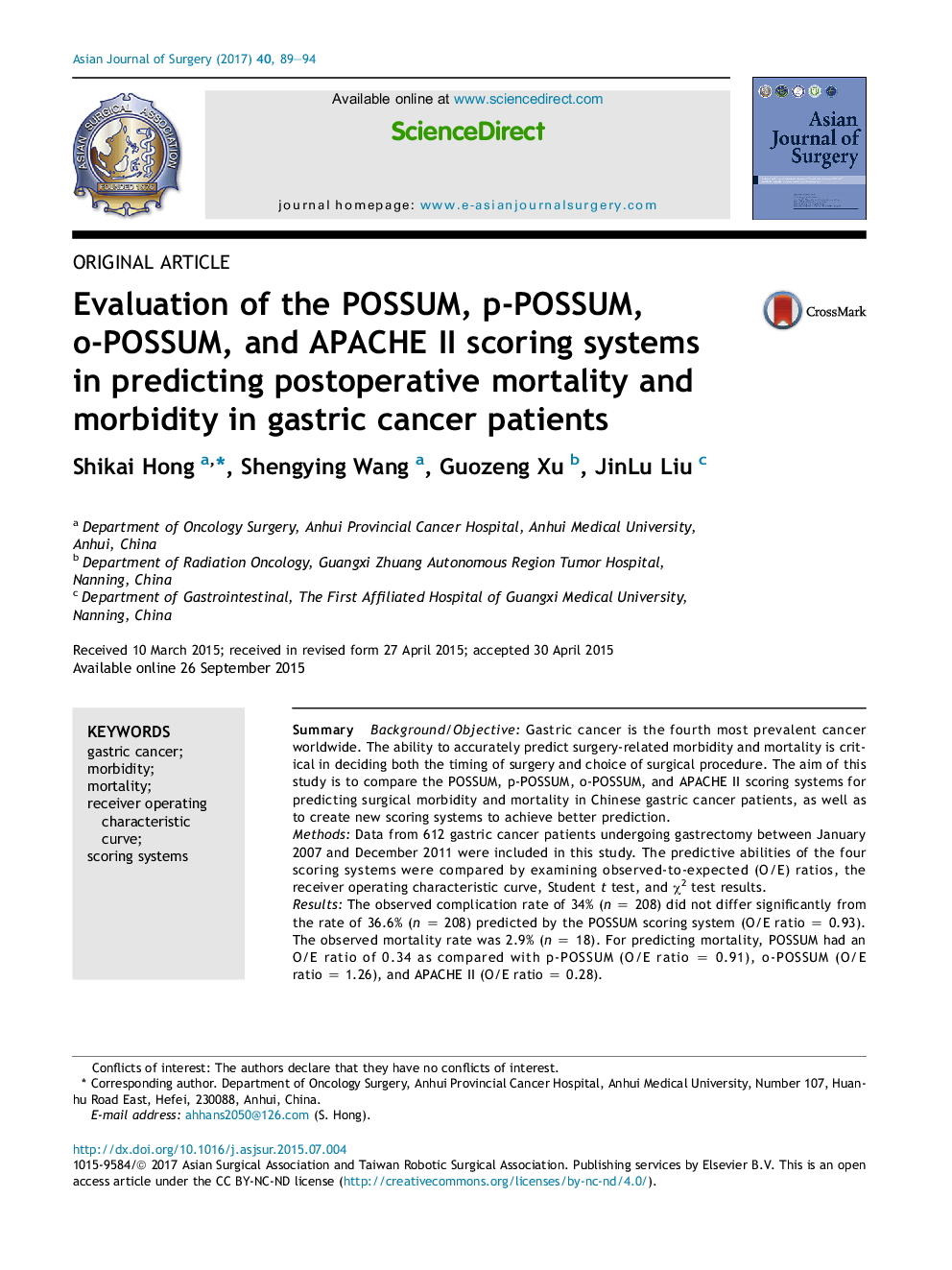| Article ID | Journal | Published Year | Pages | File Type |
|---|---|---|---|---|
| 5731493 | Asian Journal of Surgery | 2017 | 6 Pages |
SummaryBackground/ObjectiveGastric cancer is the fourth most prevalent cancer worldwide. The ability to accurately predict surgery-related morbidity and mortality is critical in deciding both the timing of surgery and choice of surgical procedure. The aim of this study is to compare the POSSUM, p-POSSUM, o-POSSUM, and APACHE II scoring systems for predicting surgical morbidity and mortality in Chinese gastric cancer patients, as well as to create new scoring systems to achieve better prediction.MethodsData from 612 gastric cancer patients undergoing gastrectomy between January 2007 and December 2011 were included in this study. The predictive abilities of the four scoring systems were compared by examining observed-to-expected (O/E) ratios, the receiver operating characteristic curve, Student t test, and Ï2 test results.ResultsThe observed complication rate of 34% (n = 208) did not differ significantly from the rate of 36.6% (n = 208) predicted by the POSSUM scoring system (O/E ratio = 0.93). The observed mortality rate was 2.9% (n = 18). For predicting mortality, POSSUM had an O/E ratio of 0.34 as compared with p-POSSUM (O/E ratio = 0.91), o-POSSUM (O/E ratio = 1.26), and APACHE II (O/E ratio = 0.28).ConclusionThe POSSUM scoring system performed well with respect to predicting morbidity risk following gastric cancer resection. For predicting postoperative mortality, p-POSSUM and o-POSSUM exhibited superior performance relative to POSSUM and APACHE II.
